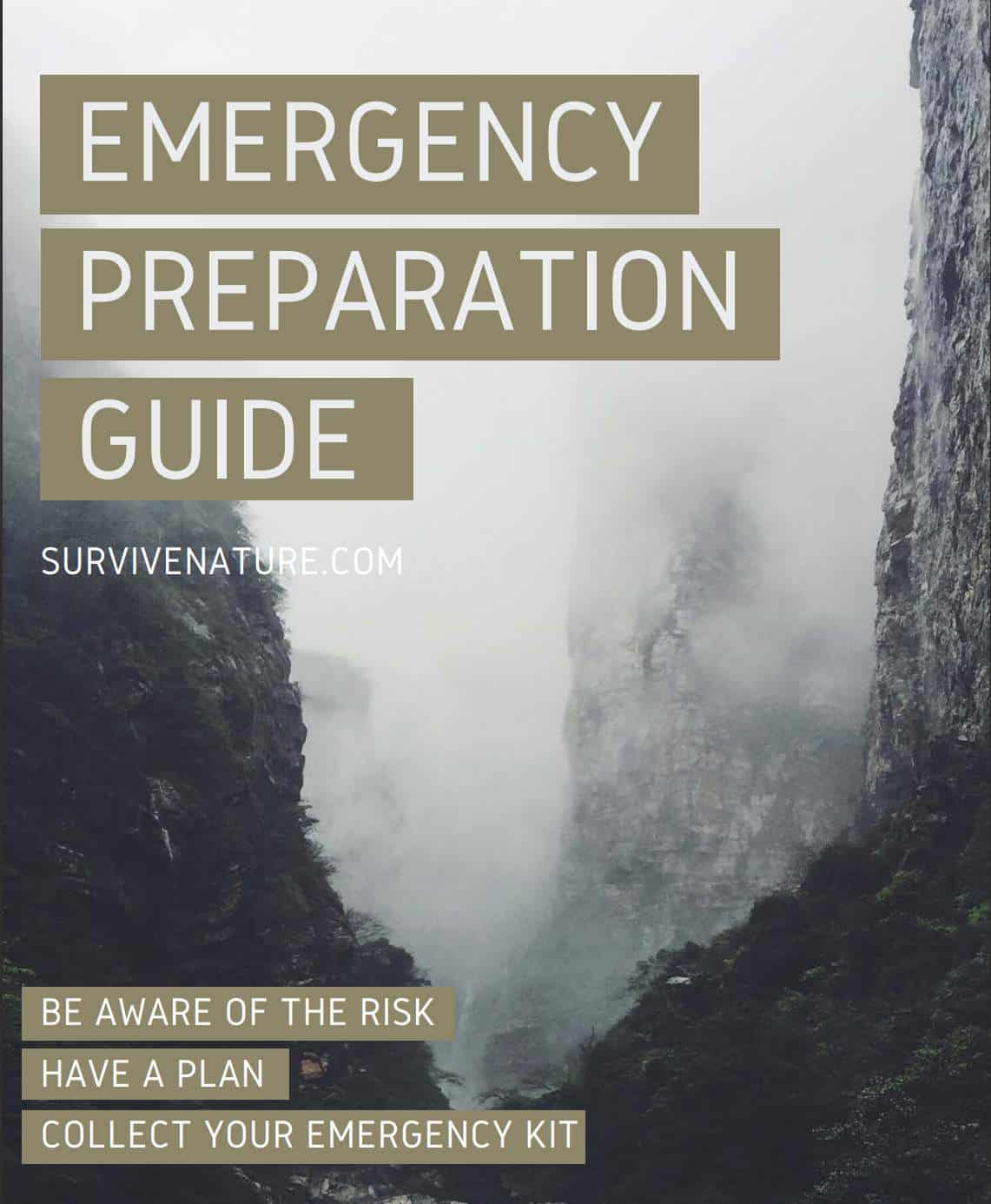A properly equipped underground cellar in 2023 will not only keep your wine bottles in conditions of appropriate humidity and temperature. Unlike a wine cellar, some underground cellars can really save your life in a survival situation: you can store food and even hide yourself, safe from the cold and heat of the outside world. Learn more about underground cellars from our article.
In ancient times, people had to do without electricity. Pretty difficult, right? Today the bulk of our social life depends on the flow of electrons. Our modern appliances can replace ancient tools and make our life much easier. But have ancient ideas completely lost their value? Not in the least bit! People have modernized some of them, other ancient tools and buildings are even in use nowadays. Has anything invented ages ago but still used in everyday life come to your mind? If the answer is no, we’ll help you — an underground cellar! When a regular refrigerator doesn’t manage to store a large amount of food, a cellar comes into play. Sure, there are other advantages that you might not know yet.
We highly recommend you to read our review till the end to learn the best ways to build a good underground cellar, to organize your food there, to save your food supplies from potential enemies, and many other things every person living in a detached house (and every survivalist) should know.
Why Is It Still a Great Idea to Have an Underground Cellar?
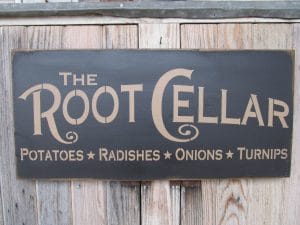
When humankind didn’t know the term “refrigerator” and its work mechanism, they had to create to keep their crops — vegetables (potatoes, onions, beets, carrots, etc.), fruits (usually apples and pears), cereal (products with a long shelf life) — in a cold room. Building a food storage root cellar was necessary as it was impossible to find fresh fruits and vegetables in winter. Plus, root cellars were the only chance to make it to the next crop in harvest failure times.
The main advantage of such a cellar was its constant coolness as no rays of the sun could touch food kept there. Low-income families built a straightforward construction — a square pit under the floor of their houses. It had a compacted ground and flattened walls. Low-income families used a leaning ladder to go into a cellar. Not to let the warm air flow enter a cellar, they covered it with a wide wooden plank. Rich families had several underground cellars of different types: wine cellars, meat cellars, even cellars for keeping dairy products. Those who lived in frontier communities made use of them to store their food supplies, not to starve to death when they had to survive during cold winters.
Now, in the era of modern appliances that can serve the same purposes, most people, especially those who live in urban areas, have forgotten the technology ancient people used to make a good underground cellar. We’ve been living peacefully for quite a long time, so we’ve lost the necessity to be prepared for a dangerous situation. Have we, indeed? No! Something terrible comes when you least expect it. Concerning survival preparedness, suppose a disease starts spreading throughout the world, two conflicting states drop a nuclear bomb, our dollars become worthless, an electromagnetic pulse strong enough to damage or destroy your device, or major world’s systems (banking systems, Internet servers, etc.) goes through a wire (the phenomenon is also known as an EMP attack). What would you do if you lost all power and technology? Where would you keep your fresh produce if you rely entirely on your refrigerator?
Extra food supplies can save your life, and the lives of your family members if any of the above-mentioned apocalyptic situations happen. Sure, underground food storage doesn’t guarantee you complete salvation in some hazardous cases, but at least you will starve to death. Those who have one are more likely to make it in a TEOTWAWKI scenario.
You don’t need to connect it to the mains. Plus, as long as your root cellar is dry and consistently cool, it is the best food preservation place. Haven’t we convinced you that it is an absolute must if you care about your own life and your family’s future? It’s better to be prepared for everything. Of course, it may come in handy not only in a survival situation but in your everyday life as well.
Before you start building it, you need to calculate your cellar’s size and consider every detail. Otherwise, all your food stockpiling efforts will be fruitless.
Why Does A Cellar Work?
What makes a root cellar a good place for your food? How does it manage to store different varieties of food items for weeks and even months? Why don’t your crops freeze in winter or spoil in summer? The answer to all these questions is one: a root cellar uses the earth to preserve the necessary temperature near freezing. It creates perfect temperature and moisture conditions for your root vegetables (onions, potatoes, etc.) and fruit products like apples. However, there is one problem: it will not function well without your help. You need to provide a good ventilation system, complete darkness, and a high moisture level to fulfill all your needs.
The controlled temperature can help slow down the decomposition process and extend your stockpiled food’s shelf life. This perfect balance between high and low temperature created due to the layers of soil between your extras and surface is the very “secret ingredient” in a recipe for off-grid food preservation.
If you look at the map with recorded annual soil temperatures, you will see that most United States regions’ average temperature is 50-60 degrees Fahrenheit. This is the temperature you get if you dig ten feet down into the earth. It is what your root cellar needs to work best. Good ventilation not only keeps your cellar at the proper temperature but also prevents humidity from increasing to an excessively high level and eliminates condensation that causes rotting and molding.
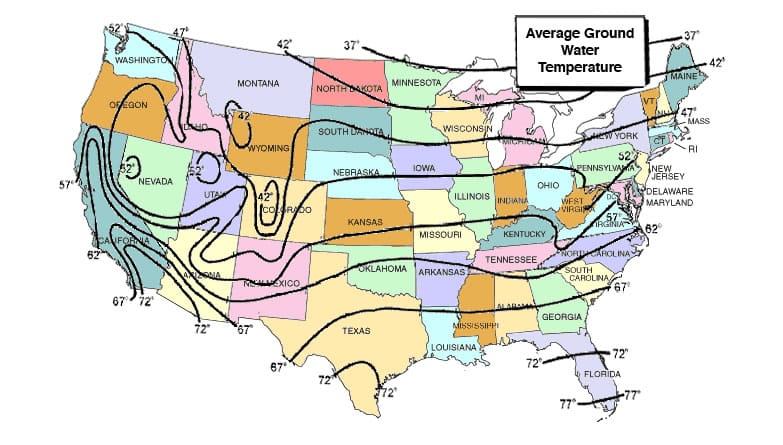
The perfect moisture level that you should offer is normally 90 to 95 percent. It prevents moisture from evaporating. Controlling humidity is not a challenging task with today’s technological devices. Get yourself a good electronic thermometer with a built-in moisture monitor. Checking the level of humidity is crucial if you want your root cellar to function well. Keep in mind that natural floor like gravel or dirt will retain more moisture than those made of concrete. If the level is still low, you can cover your crops with damp burlap or put several bottles of water into your underground cellar.
If you ensure all these storage conditions, there will be no need to use a refrigerator anymore. Plus, a root cellar can allow you to lower your electricity bill. Isn’t it great?
Keep in mind the knowledge of how the cellar works are not enough. You need proper planning to avoid mistakes. Besides, you need to decide what kind of underground cellar you want to build.
What to Store in a Root Cellar?
You can use a root cellar for many different purposes. That’s why it depends on your intentions on what type of foods (vegetable produce or non-perishable kit) you should put inside.
If you want your cellar to serve as a bunker in case of an emergency, the best option for you is to keep food with a long shelf life there. It should be large enough to have room for all your survival supplies. Grains, freeze-dried and canned food — these are the best options if you want to have a nutritious diet during hard times and prevent your body from experiencing stress.
Long-Lasting Food Is What You Need to Place First
Whether you plan to prepare for a survival situation or simply want to have enough food in winter times, it’s better to choose food that can withstand different temperatures and preserve its nutritious qualities for months and years.
Have you ever heard about the food usually made for survival scenarios and long expeditions that can last for up to 50 years? Any guesses? Any experienced survivalist can find the answer within a few seconds — pemmican! You won’t find a better place for keeping this great snack than a cool, dark room with a controlled temperature and humidity. If you don’t provide perfect conditions for cellaring it, there will be a risk of getting food poisoning. Plus, make sure that your pemmican bars don’t have access to oxygen. If you know a pemmican recipe, starving to death in times of emergency won’t be the thing to worry about. However, cabs are also crucial for your survival. So, place some hardtack into your underground cellar to have nutritious bread in case your family has to go through hardships.
Cellaring food that doesn’t need refrigeration for long periods of time is beneficial in any situation. If you decide to go on a hunting or camping trip, it will not be very convenient for you to cook in remote places. You can reduce the weight of your backpack by not putting a portable stove into it. Have some crackers with peanut butter and a pemmican bar — and you won’t have to waste your energy on cooking after an exhausting day.
Storing Fresh Food
If you can ensure proper conditions for keeping varieties of fresh vegetables like carrots, onions, cabbage, potatoes, beets, etc., and fruits like citrus fruits, apples, and pears, you can add them to your root cellar storage as well. A cold room allows you to keep not only fall and summer harvests. Your cellar can serve as winter storage as well, enabling you to store winter vegetables (kale, carrots, Brussels sprouts, winter squash, etc.). The only requirement for extending the shelf life of your product is to store well.
Why do they require a certain level of temperature and humidity? It’s simple. For example, ripening fruits (such as apples) can produce ethylene gas, which can cause potatoes to sprout or undesirable flavors in other stockpiled foods.
You can hang the chart below on the wall to ensure that you provide a means to store well all varieties of produce and fruit types from your garden. You don’t want your effort to be fruitless, right?
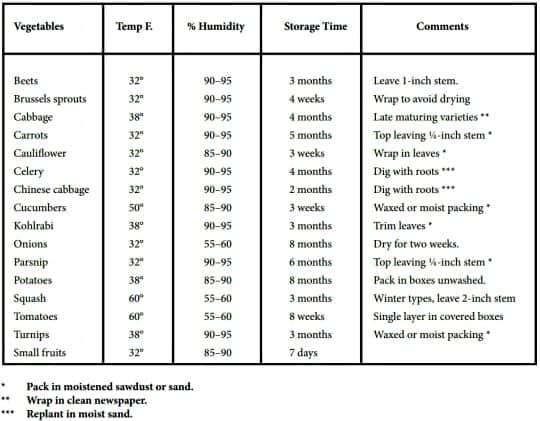
How to Solve the Cellar Humidity Conflict
Let us make things clear to you. What is the humidity conflict?
Suppose you decide to prepare a survival food kit consisting of non-perishable foods with a long-lasting shelf life. Freeze-drying is a method of preparing supplies for difficult times. It comes into conflict with moisture in a root cellar. Foods frozen this way can help you survive a disaster but remember that you should keep them properly. If the place you have chosen for storing such a food kit doesn’t manage to keep it away from moisture, there is a solution for you — buy a good dehumidifier! They are available on the Amazon website at affordable prices.
But homegrown crops will not survive without moisture in the air. Remember the ideal level of humidity? It should be high — about 90-95 percent. With this level, your fresh vegetables and fruits will remain safe to eat for several weeks and even months.
There are several ways to solve this conflict. It’s up to you to decide which one suits you best.
Separate Long-Term Foods From Fresh Produce
It’s not an easy task. But it is one of the best ways to keep both kinds of food supplies in one underground storage. Put them in separate containers or separate sections in your cellar. It will require much more time and energy to provide ideal moisture conditions for each area, but you won’t have to build several root cellars.
Keep Your Survival Food Kit in a Special Bag
This bag is called Mylar bags. Made from durable materials, these bags can isolate your long-lasting food from oxygen, high humidity, and sunlight. Put several desiccant packs into each bag to eliminate moisture’s harmful influence on your survival food storage. Keep your bags in sealed buckets to add another level of protection. Such buckets don’t let air touch your supplies. This option will allow you to keep freeze-dried foods and fresh produce in one place without creating separate areas in your root cellar.
Or…Do Not Store Survival Food At All!
If there is no opportunity to purchase such bags or time to create proper conditions for freeze-dried or dehydrated food, avoid preparing it. Plus, it is rather expensive to get freeze-dried food. It will need either a special dryer machine that removes moisture or a considerable sum of money to buy survival food.
It’s better to store only your harvested root vegetables and fruit in root cellars. Think of another place to keep food with long shelf life. Think of a cool basement.
Take Cellar Humidity Under Control
As we have mentioned earlier, high humidity is a crucial factor due to which your crops can remain fresh for a long time.
Remember the soil temps map? There is no way to change natural temperatures. But you can control them. Let’s find out how you can do it.
There are two main options for you: add moisture or create a good ventilation system. Proper ventilation will be necessary even if you keep non-perishable foods.
Just take two plastic pipes and place them at the opposite corners of your root cellar. One pipe should stick out of the roof. The other one placed close to the floor going through the wall should face outside.
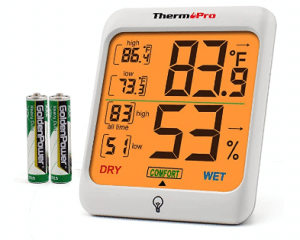
If the level of humidity is still low, you can add moisture by choosing a natural floor like gravel or covering your plants with burlap sacks. Placing bottles or pans of water into the cellar is another way to save your supplies from drying out and spoiling.
The gas known as Ethylene (as you can remember) and produced by ripening fruits triggers off the spoilage process, so ensure that the ventilation system has no flows. It will help you avoid problems in the future.
Modern technologies allow you to control the level of humidity and regulate it. You can buy a hygrometer thermometer to monitor moisture levels and indicate whether the air in the food storage is dry, wet, or comfortable.
What Type Of Root Cellar Do I need?
That’s the kind of question you need to ask yourself before building a root cellar. But before you ask this one, there is one more issue you need to consider. Do you have enough money, time, and energy to build a root cellar for keeping your crops or products with an extended shelf life? According to their size, there are two types of root cellars you can choose from: a big cellar and a small one. It’s obvious which typically requires more time and funds.
A Root Cellar or a Bunker?

Root Cellar in a Small Container
If your wallet doesn’t allow you to build even this cellar, there is one more option for you — burying small storage containers with your garden crops. It’s the quickest and cheapest way to supply your family with fresh food when the harvest season is far gone.
Like a survival cache, a root cellar container enables you to stockpile extra supplies. However, there is one major difference between them — their contents. Place your survival tools in a survival cache. A root cellar container is for food only.
We’ve already mentioned that a good underground cellar requires cool temperatures. Loot at the map of soil temps in different American regions again. Remember that if you store food at least ten feet underground, you will need a container to withstand these conditions. The best water-susceptible materials are metal and plastic. Most families have a steel metal bucket or a garbage can that they can use for stockpiling. Plastic drums or barrels, storage boxes, and totes are usually non-damaged and non-leaking. Unlike Indians and indigenous Australians who used pots made of clay, we are lucky to have plastic bins available in shops. If plastic had been available at that time, they would definitely have made use of it.
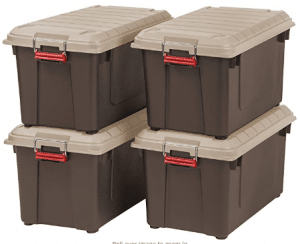
However, keep in mind that if you live in a region with freezing temperatures in winter, it will be impossible for you to use your food supplies in cold times as your spade will not even enter the ground. But you can always have fresh vegetables and fruits on your table in spring or summer. Low temperatures can also provoke the bursting of what you keep inside plastic boxes. So, consider every detail before you choose the material for your future “shelter” for root crops.
What is more, essential storage requirements also include filling your container with moist sand or peat moss, which helps to control the humidity level.
Let us show you that the process of building such food storage is not challenging. All you need to do is to dig down a big hole about the size of your container. To provide the 95-percent level of humidity, make sure that there is liquid in the bottoms. For more details and step-by-step instructions, watch the video.
This method also allows you to build a root cellar (or several root cellars) if your budget available for this project is only ten dollars! Check out the video and find out how to turn your old refrigerator into a storage place for keeping monthly supplies.
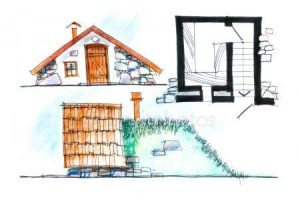
Sure, this method is not suitable for everyone as it sets certain limitations on the amount of fresh produce you want to store. If you decide to add something to your supplies, you will need to dig up another hole. Expanding your storage with the help of small containers will take you as much energy as a large cellar. Sometimes it’s better to save some money and prepare for a bigger project. Just decide for yourself how many food stockpiles will be enough for maintaining your family during harsh times and how long you need to keep it fresh. We’ve proved that even a large root cellar can be affordable.
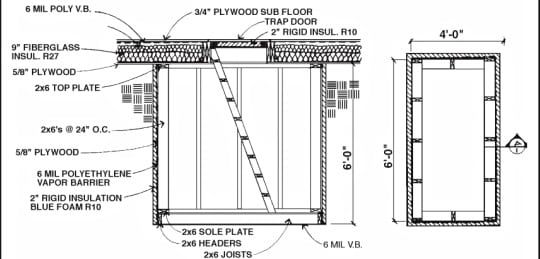
Root Cellar Construction Process
After finding out how root cellars work and under what conditions they can function correctly, we can proceed to the building process. If you want to build a large underground cellar, you need to have a lot of time and patience as you should consider every detail, especially related to the ventilation system, and prepare for the work properly.
On Youtube, there are plenty of tutorial videos in which experienced people explain to you how to create a cellar of different sizes and shapes. The Internet is a great source of various ideas that can help you create a unique root cellar and guide you in the right direction. You are free to create a cellar that can meet your needs by combining styles and experimenting with techniques. That’s why there are no accepted rules for making one, but we’ve selected the best ideas for you to create a storage place on your own.
Can cellaring be art? Yes, indeed! By experimenting with different ideas, you can go so far as to create an art masterpiece. The American guys Andrew and Rachel came up with the idea to turn their root cellar into a “hobbit hole” with an arched ceiling and a round door! They have the right to ask anyone who visits their cellar to pay for it. Such videos can’t but inspire other people to create something as unusual and unique as their work. Sure, it requires exceptional talent and great skills.
Not all people have the same desire and amount of time to do such tremendous work. They can get away with a simpler construction. They don’t care about decorations and other unnecessary details that will only take a lot of time to create. They need a room with a considerable amount of space to store a great number of cans and containers.
A couple from Alaska decided to make their root cellar with earthbags filled up with soil. This method of making a root cellar of a big size is one of the cheapest ones. Earthbags are unlikely to break down over time as they are water-resistant and durable. The young woman and the man recorded the entire process and divided it into two parts. Check them out to find alternatives to concrete walls.
It is quite easy to understand their specific techniques as they go into detail when giving step-by-step instructions. There are no decorative elements. But are they so necessary?
If you go back to the previous paragraphs, you will find the information about small container root cellars. Those who don’t have a spacious backyard can create a cellar by burying a garbage bin or a special plastic box into the ground. This method will also be suitable for those who want to hide their supplies in a bug-out location.
If your basement is empty and doesn’t have a heating system inside, there is one more option for you — to build an indoor root cellar. Fancy getting a jar of pickled vegetables or a pan of fresh potatoes without going outside your house!
If you want to avoid making mistakes and make your cellar work well, check out Youtube videos. Some of them provide extremely detailed information, from the size of plywood to installing air vents.
So, don’t hesitate to google up ideas and video tutorials to create an ideal root cellar. The final result is always unique as you use techniques that fit only your needs. Different families have different purposes.
But before you begin to build one, keep in mind that there are many issues you need to consider and even discuss with other family members. Start with deciding what amount of food per family member will be enough and what kind of food supplies you need (non-perishable survival food or fresh produce).
The list of things you must take into account is not limited only to food issues. Read the section below to find out what else you need to think long and hard about to make a good underground cellar. Then you will be able to make up a detailed plan and start digging.
Budget Available
The size of your root cellar depends on the size of your wallet. Do you have enough money to implement all your ideas (including the craziest ones)?
Building a root cellar requires a particular set of tools (not just your shovel!). Keep in mind that if you are going to buy the materials for your root cellar, they should be of high quality. If you choose durable and strong materials, you can be sure that your project will not fail in a couple of years.
The Hole for a Cellar
The building process normally starts with digging up a hole for your root cellar. Decide where the hole will be located and how large it should be. Will you be able to dig it on your own with a tactical shovel, or will it be necessary to make use of an excavator? Do you want to stand up in your root cellar?
The deeper your hole is, the easier it will be for you to hide your crop storage. Deep holes also provide colder temperatures for your fresh food to remain safe to eat much longer.
Cellar Foundation
Laying the foundation is necessary if you want to prevent groundwaters or rodents from entering your root cellar. Choose the material wisely. Gravel and dirt retain more moisture than concrete. If you don’t want to increase the humidity level with additional water or other things, use natural flooring.
A solid floor also allows you to have stable racks and shelves on which you can place a lot of cans, bags, and boxes.
Cellar Walls
Strong walls protect your cellar from potential enemies like insects, rodents, etc., seeking to obtain your supplies.
If your budget allows you to have a brick or concrete walls, do it! These are the best materials for your cellar, as they are the most durable and strongest. The common red brick is water-resistant and is capable of lasting for decades. Bricks are easier to handle than concrete blocks.
Walls should also keep cool temperatures in your root cellar. That’s why to choose the material that will create ideal conditions for your root crops.
Cellar Ventilation System
It’s what all root cellars should have regardless of what you store inside. It prevents Ethylene gas from accumulating and accelerating the spoilage process.
Two PVC vent pipes will be enough for a small root cellar. You can add two more pipes to provide a better system of air circulation for a larger one.
Ceiling and Roof
Your budget will also determine the way you will cap your root cellar. There exist two main options: lumber and concrete. Sure, wood is cheaper and simpler to handle, but it is not a very durable material. You will have to reconstruct the roof in several years.
Gaps
You must seal up all gaps in the ceiling and door jams if you don’t want different pests to touch your precious food.
Cellar Doors and Locks
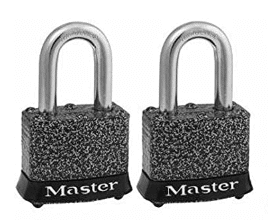
One of the best options you can find on Amazon is a Rustoleum hanging lock made of steel that will not let an undesirable guest enter your cellar.
You’ve got enough information to design and start building your own root cellar. It’s not very difficult to build it on your own. Just follow our recommendations and get insights from different tutorial videos.
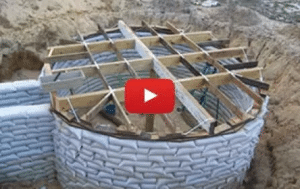
Organizing Your Food Storage
Once you’ve built your root cellar, another equally important aspect is necessary for extending the food supplies’ shelf life. Organizing everything that you keep inside helps to use the space of your root cellar effectively. Plus, it’s better to separate fruits and vegetables and to keep food with a long shelf life away from crops.
Luckily, you can find things that will help you design your interior space in stores and purchase them. What are these things? Read the section below.
Food Boxes and Containers
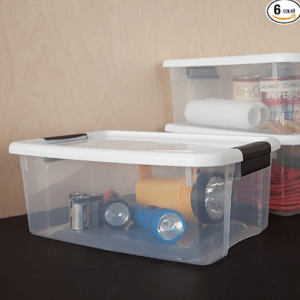
Transparent plastic boxes allow you to see through them and control the condition of foods kept at the bottom of these boxes. Plus, these boxes will make your place look neat and well-organized. It will be much easier for you to find the necessary food or produce.
Racking and Basement Shelving System
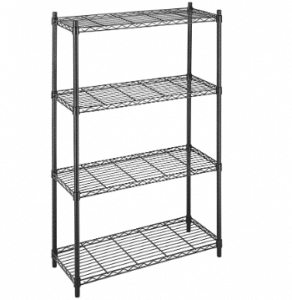
Choose racks made from durable materials and those that can hold big weight. We’re sure that you’ll find lots of variants available at affordable prices on the market.
With all these shelves and racks, going down to your root cellar will be similar to shopping. But instead of making purchases, you will go down there in the middle of winter or spring and pick something off the shelf and cook it up in your kitchen. You won’t need a vegetable or fruit of the same summer tastiness in a real shop in winter.
Other Tips to Arrange The Food In Your Storage Area
Setting up shelving racks and putting the food in containers is only the first step in organizing your food stockpiles. Some of your food items might require cooler temperatures, so place them on the bottom shelves.
Such fruits, like apples and bananas that release ethylene gas, should be kept at the top of your shelving rack. It will help you to prevent other food items from spoiling. If you have vents, it will help you to get rid of this gas even more effectively.
Before putting potatoes, onions, garlic, and different winter squash varieties (pumpkins, acorn squash, etc.) in a cool place, dry them in the open fist and then at 80-90 degrees F for about one-two weeks.
Canned food and metal containers are susceptible to rusting, so consider placing them in sealed mylar bags or using a vacuum sealer machine. This air removal method will help isolate survival food from humid conditions in a root cellar, making it possible to keep them along with fresh produce.
Maintaining Your Food Stockpiles
This is a vital step as your survival chances depend on keeping the food supplies edible for a long time. Even non-perishable items require regular control.

- Label your food items to check out expiration dates. We recommend you to purchase a high-quality label printer to make the process much easier.
- Separate root products (such as potatoes) from those producing ethylene.
- Keep an eye on ceiling gaps and door seals. In case there appears a gap, seal it up immediately.
- Control humidity and maintain the ideal temperature for the foods.
- Set up traps for rodents and clean them regularly.
- Replace locks if you notice rust and degradation signs.
- Throw away rotten and spoiled items.
- Don’t let unknown people see what route you take while getting to your root cellar. If possible, every time you get to your storage location, do it uniquely. Don’t leave traces.
Who and What You Need to Protect Your Root Cellar From

Before you begin to build your root storage area, there are many challenges you need to anticipate. Your final result should eliminate the risks of reconstructing it after serving you for a couple of years. Let’s find out what can jeopardize the whole process and long-term project.
Fungi
A high level of humidity attracts mushrooms a lot. If it’s impossible to lower the moisture level and keep your cellar dry, oversee your products to prevent mold from taking up the residence.
Animal Visitors
We talked about the way of making your root cellar rodent-proof. Concrete foundation and walls will help you prevent mice, rats, and other pests from damaging all your food supplies. If they do intrude into your property, there are lots of different methods of how to get rid of unwanted visitors: from sprinkling peppermint inside of your cellar to having a kitty to hunt them. Sometimes providing an extra level of protection to the ventilation system will be enough. This issue requires your special attention as losing a good portion of your crops is not a pleasant surprise.
Bacteria
Some bacteria are beneficial for you (like those in your prebiotics yogurt), while others can be rather dangerous for your harvest. You can prevent bacteria from festering in your garden produce cellar by placing food items into plastic containers and keeping a watchful eye on them. In case some item starts rotting, remove it from your cellar immediately.
Insects
Flies, bugs, ants, or moths infection can make you throw everything out into a rubbish bin one day. Keep these pests out by spraying insect repellant over your crops.
Humans
The most unpredictable creatures, right? Keep your doors locked or employ one of the hiding techniques (we’ll dwell upon them a bit later) not to let any human find and steal all your provisions.
Cellar Camouflage Techniques
No matter whether you build a food storage cellar in a bug out location (like a deep forest) or in the area near your home, hiding your food stockpiles from potential enemies is a must (be it snakes and rats or people).
The amount of energy you will spend on hiding it depends on the size of your root cellar. If you’ve made it out of a plastic box or garbage bin, covering it with dirt and leaves will be enough for you.
If your root storage room occupies a lot of space, you will have to think of more creative ways to protect it from potential intruders. To keep it invisible from the outside, you can cover the roof with dirt and plant several trees or high shrubs in this area.
Bottom Line
As you see, to create a good place for storing food emergency kits or fresh food that will maintain your nutritious diet in cold times is not an easy task. There are so many things you must think about beforehand, but if you do manage to build a root cellar, regardless of its size, it will increase your odds of survival in difficult times and will prevent your family members from starving to death.
FAQ
Is an Underground Cellar legit?
Building an underground cellar is completely legit if you do it on your premises. Keep in mind that you cannot intrude into other people’s cellar without their permission. Otherwise, you will have serious problems. Plus, you’re forbidden to build underground cellars on other people’s property. In some cases, you can get a permit. Ask the authorities to give you thorough information related to the issue.
How Do You Build an Underground Cellar?
There are many techniques to build one: from very creative and unique to simple ones. It depends on your budget and the time available for starting the process. You can find a lot of information about building materials and instructions on our article’s essential steps. Root cellar construction requires taking consecutive actions: start with digging up the hole, proceed to the footer and walls, finish with the roof and the ventilation system.
What Temperature is in a Root Cellar?
About 30-40 degrees F. However, it will function well at 50-60 degrees. Apart from proper temperature, it requires the ideal humidity level – 85-95 percent. Fulfilling these requirements is crucial if you want to prevent your crops from spoiling.
Why Do They Call It a Root Cellar?
As the name implies, a root cellar is meant for storing root vegetables, such as onions, turnips, potatoes, carrots, etc. However, nowadays, there is a tendency to store fruits, canned food, pickled food, wine bottles, and other food items and drinks in such a cellar.


